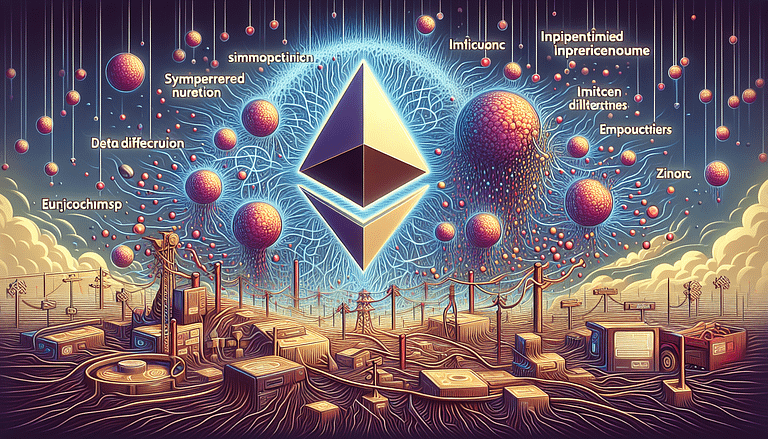“Revolutionizing Online Payments: Anvil’s DeFi Solution to the Internet’s Original Sin”
Unveiling Anvil: The DeFi Protocol That's Forging a New Era of Payment and Credit Systems
Hey there, crypto enthusiasts! Buckle up and get ready for an exciting ride as we dive headfirst into the world of decentralized finance (DeFi). It’s time to meet Anvil, the DeFi protocol that’s aiming to fix the internet's "original sin," as Marvellous Marc Andreessen once called it.
The Original Sin: Why Can't We Just Press "Buy" on Our Browsers?
Picture this: you're browsing the internet, minding your own business, when suddenly you find that perfect pair of socks featuring cute cats playing with bitcoins. You hit "buy" and… well, you wish it was that simple! Historically, the inability to make payments directly within our browsers has been a glaring gap (alright, a yawning chasm) in internet functionality. We've been forced to rely on third-party entities, like banks, who inconveniently take a cut of our glorious internet shopping sprees.
Enter Bitcoin, and now enter Anvil, which aims to transform this scenario with its DeFi magic wand.
What Is Anvil? A Quirky New World of Credit
Anvil isn't just the burly blacksmith's tool you'd imagine; it’s a sophisticated Ethereum-based DeFi protocol conjured up by Tyler Spalding and his creative cabal. Here’s the lowdown: Anvil leverages Ethereum smart contracts to create letters of credit (LOCs) using your crypto assets as collateral. So, you deposit your Ether or USDC, and just like that, you’ve got a credit note to wave around. This slick system is akin to a magical high-tech check that never bounces back with "insufficient funds."
No Fees? Anvil's Party Trick
Here’s where Tyler Spalding breaks into his show-stopper number: trading with Anvil is fee-free! No hidden charges, no sneaky costs—it’s true-blue open-source magic. Anvil's governance is a community affair, with 60% of the tokens dangling for partners and users to grab, and enjoy their voting rights on how things roll.
The Real-World Application: Beyond Hypothetical Hype
Now, don’t brush this off as vaporware—Anvil is already dancing with esteemed partners like Amdax, Empowermint, and Flexa. They’re putting Anvil’s open-source tech to work creating services from asset collateralization to retail cash loans. Imagine a world where payments aren't a relentless file of charges but streamlined processes that just, well, work.
Bug Hunts and Investor Mysteries
So, you want to know how Anvil became so sturdy? It was built by Spalding — a lone ranger with no investor strings pulling him back, simply bootstrapped into existence. Add to this audit assurances from Open Zeppelin, Trail of Bits, and a bug bounty from Immunefi, and you've got a DeFi protocol armored up for action.
It seems our friend Spalding took Andreessen’s "sin confession" rather literally, building Anvil to right what’s been imperfect all along.
Final Thoughts: A DeFi Hope for the Future
In the end, Anvil isn't just about creating a new financial gizmo—it's about rewriting history, or perhaps redeeming it. We’re wondering, if Tyler Spalding waves his Anvil-made credit wand, might the web sprawl out its own native payment system complete with Bitcoin capes and Ethereum leggings?
There you have it, folks! Anvil is forging a future where payments and credit systems get their rightful place in the internet’s ecosystem. So next time you stumble upon those crypto-kitty socks, perhaps you'll just buy them seamlessly… with DeFi.
CoinDesk — When knowledge is crypto, wisdom becomes mainstream finance.
A big shout to Benjamin Schiller for this rock-solid scoop, and props to Tyler Spalding for steering the ship toward a newer, blockchain-brighter tomorrow!






